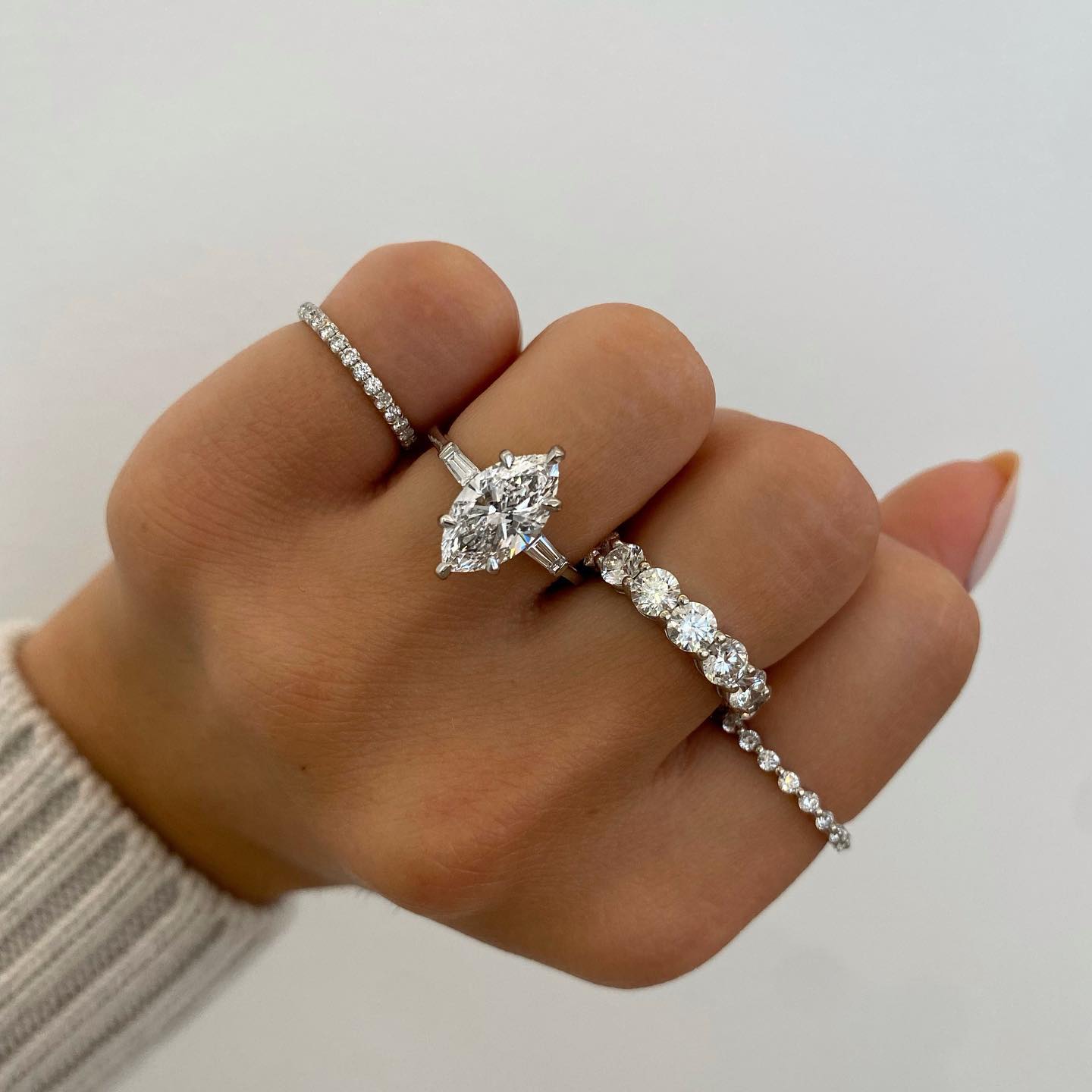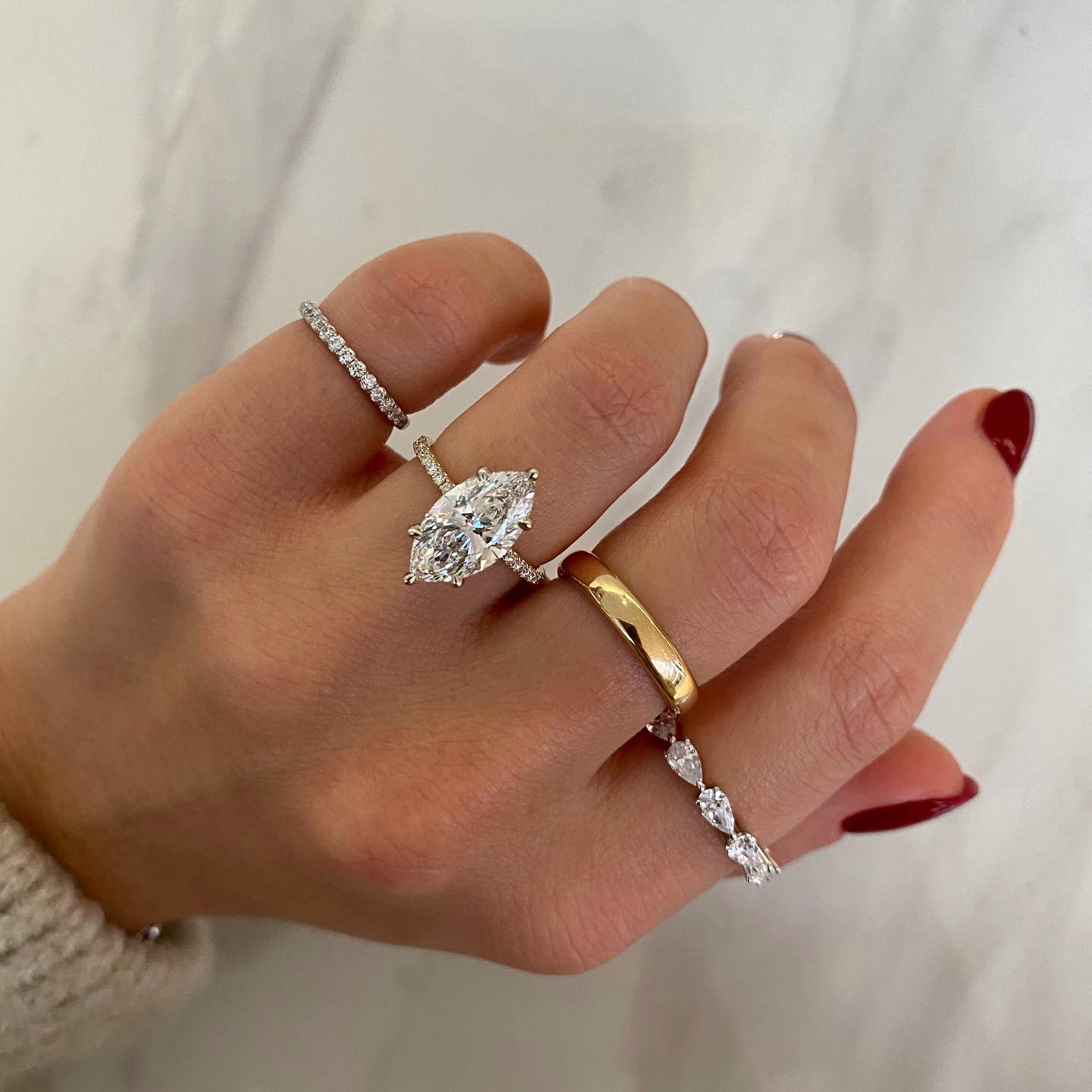The origin of this diamond cut can be traced to the 18th century. King Louis XV of France asked a jeweler to create a diamond shape that looked like the lips of his lover. Throughout time, the marquise cut has come to develop the distinct shape it is known for now.
The name of the marquise cut comes from an inherited rank just below a duke but above a count. Its name comes from the common practice of courtiers wearing marquise cut diamonds to let others know their rank. While the marquise cut started life as a cut for diamonds, it is now used with other gems, such as sapphires, rubies, and emeralds.

- Ideal Table Percentage: 55% - 60%
- Ideal Depth Percentage: 60% - 65%
- Ideal Length to Width Ratio: 1.85 - 2.00
Resembling a combination of an oval and pear cut, the marquise cut diamond has been around for a long time and continues to look great. Once you’ve chosen this diamond cut for an engagement ring, make sure you select the right setting. It should protect the gem while showing off how great it looks.
Six-prong settings might be the best option for a marquise cut diamond as the stone is held securely in place while not getting in the way of the light performance from the diamond. Four, five, and eight-prong options are also available, but the six prong remains the most popular.
Going down in prongs leaves the diamond less protected from damage. Adding additional prongs makes the diamond less visible to those around you. If the diamond is a smaller one, a four-prong setting may be ideal to keep it secure in the ring.
If you’re looking for a setting option that is more intricate than a solitaire, another popular option is pavé settings. These settings have many tiny diamonds essentially paving the band around the center diamond, adding extra sparkle to the ring. There are countless variations of pave settings, ranging from classic styles to more whimsical designs, giving you a bit more creative freedom when choosing one.
A marquise cut diamond can be used in any type of jewelry but is the most common in settings for engagement rings. This diamond cut has several benefits for the person who chooses to wear it:
- The narrow, long shape makes the finger look longer and slenderer.
- Marquise diamonds tend to be less expensive than round cuts.
- These diamonds often look larger than other cuts of the same size.
- The brilliance does well to hide any inclusions through the light collection.
When you want a fancy shape without sacrificing brilliance, the marquise cut diamond is an excellent choice. These diamonds look larger than other cuts with the same carat weight and tend to cost less than round cuts. Solitaire rings are a great choice for a marquise cut, but accents around the diamond can also create a great aesthetic.





























